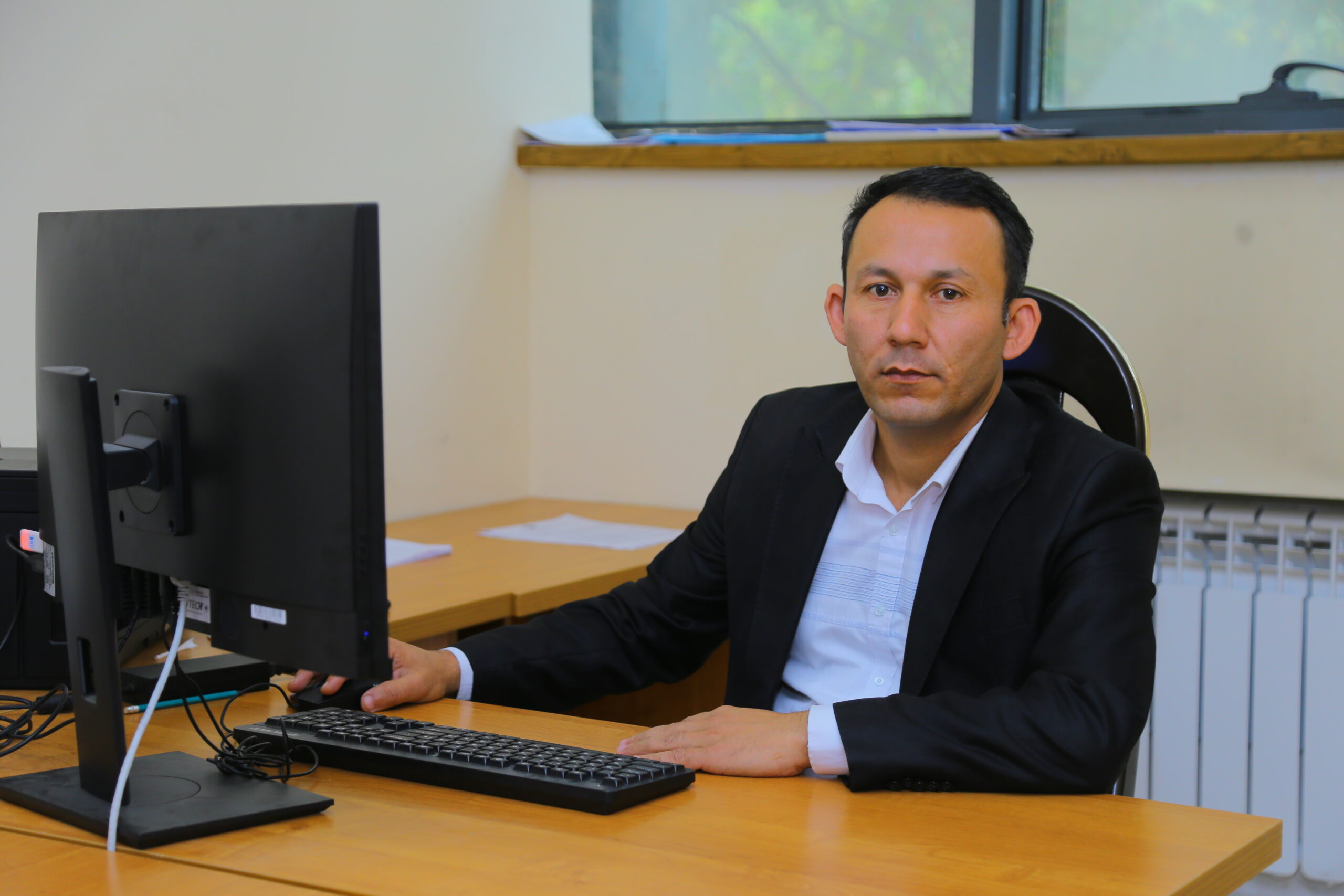
Director of the Information Resource Center
RAXIMOV MIRAXMAD MAXAMADXASILOVICH
- 100174 University str 4, Olmazor district, Tashkent
- Tuesday, 14:00-17:00
- +998 71 246-67-71
- raximov@nuu.uz
Brief information about the center The National University of Uzbekistan began its activity on May 12, 1918, and the library was formed at the same time as the university. In the 1920s, the library’s book collection comprised 75,000 publications, in the 1940s, 500,000 publications, in the 1960s, 1 million publications, and in the 1980s, 2.5 million publications. In the 1920s, the number of readers of the library increased to 1,000, in the 40s to 4,000, in the 60s to 7,000, and to 21,000 in the 80s. In 1938, the Scientific Library was included among the 30 largest libraries in the country based on the order of the All-Union Committee of Higher Schools, based on its fund and scale, and in 1969, it was given the status of a Scientific Library. In 1944, the Scientific Library was transferred to the second category, and in 1990, it was transferred to the first category regarding the payment of wages to the employees of the Scientific Library. On December 16, 1976, the scientific library was approved as a methodical center of the libraries of HEIs of Uzbekistan based on the order of the Ministry of Higher and Secondary Special Education of the Republic of Uzbekistan. In 2006, the decision of the President of the Republic of Uzbekistan PQ-381 on the organization of providing the population with an information library was adopted. Based on this decision, the work of the library is directed to the implementation of information and telecommunication technology and the transition from the traditional form to the modern form of work.
During its activity, the University Information Resource Center complies with the laws and decisions of the Republic of Uzbekistan, namely:
- Law of the Republic of Uzbekistan “On information-library activities” dated April 13, 2011 ORQ-280;
- Law of the Republic of Uzbekistan “On copyright and related rights” dated July 20, 2006 ORQ-42;
- PQ-3271 of the President of the Republic of Uzbekistan dated September 13, 2017 “On the program of comprehensive measures to develop the system of publication and distribution of book products, increase and promote book reading and reading culture” number decision.
- It follows the decision of the President of the Republic of Uzbekistan No. PQ-4354 of June 7, 2019, “On further improvement of the provision of information and library services to the residents of the Republic of Uzbekistan” and other documents. and other documents.
Currently, the single complex includes all 3 functional departments of the Information Resource Center, electronic information resources department, 12 faculty Information Resource Center service departments, 700-seat classrooms. takes The information resource center participates in the educational process of the university, as well as scientific research. The main task of the university information-resource center is to provide university professors and teachers and the educational process with educational, scientific and artistic, information library resources. The information-resource center provides a differentiated service for readers of all categories of the university.
Today, the number of readers of the Information Resource Center is 21,650. The number of annual visits is more than 350,000. The number of literature issued during the year is more than 740 thousand. Every year, 10,000 publications are received for the fund of the Information Resource Center, 120 titles of periodical publications are received. 80-90% of it is made up of new educational literature and training manuals received from the fund of the Information Resource Center. The information resource center spends on average 200 million soums for books, and more than 180 million soums for subscriptions.
The information resource center has more than 3 million units of literature written in Uzbek, Russian and foreign languages. In the information-resource center, the educational process of the university and the provision of students with study guides and educational literature are well established, educational literature – 1 million 200 thousand publication units, Scientific literature comprises 650,000 units of publication, and the fund of literary literature – more than 250,000 units. Also, the fund of periodicals is interesting and rich, consisting of magazines and newspapers.
1465 copies of rare manuscripts and lithographs written in Tajik, Persian, and Arabic languages covering the 12th-20th centuries have been stored in the fund of the Information Resource Center for many years. The fund provides interesting information about the development of various Central Asian sciences such as history, geography, religion, medicine, Sufism, and philosophy.
Up to 30,000 electronic versions of educational, scientific and artistic literature have been created for readers in the study halls of the Information Resource Center, as well as a database of global information resources via the Internet: Jstor, Ebsco, Springer Nature, Proquest Dissertation and Theses Global. there are opportunities to meet. The number of employees of the information resource center is 42 people.
